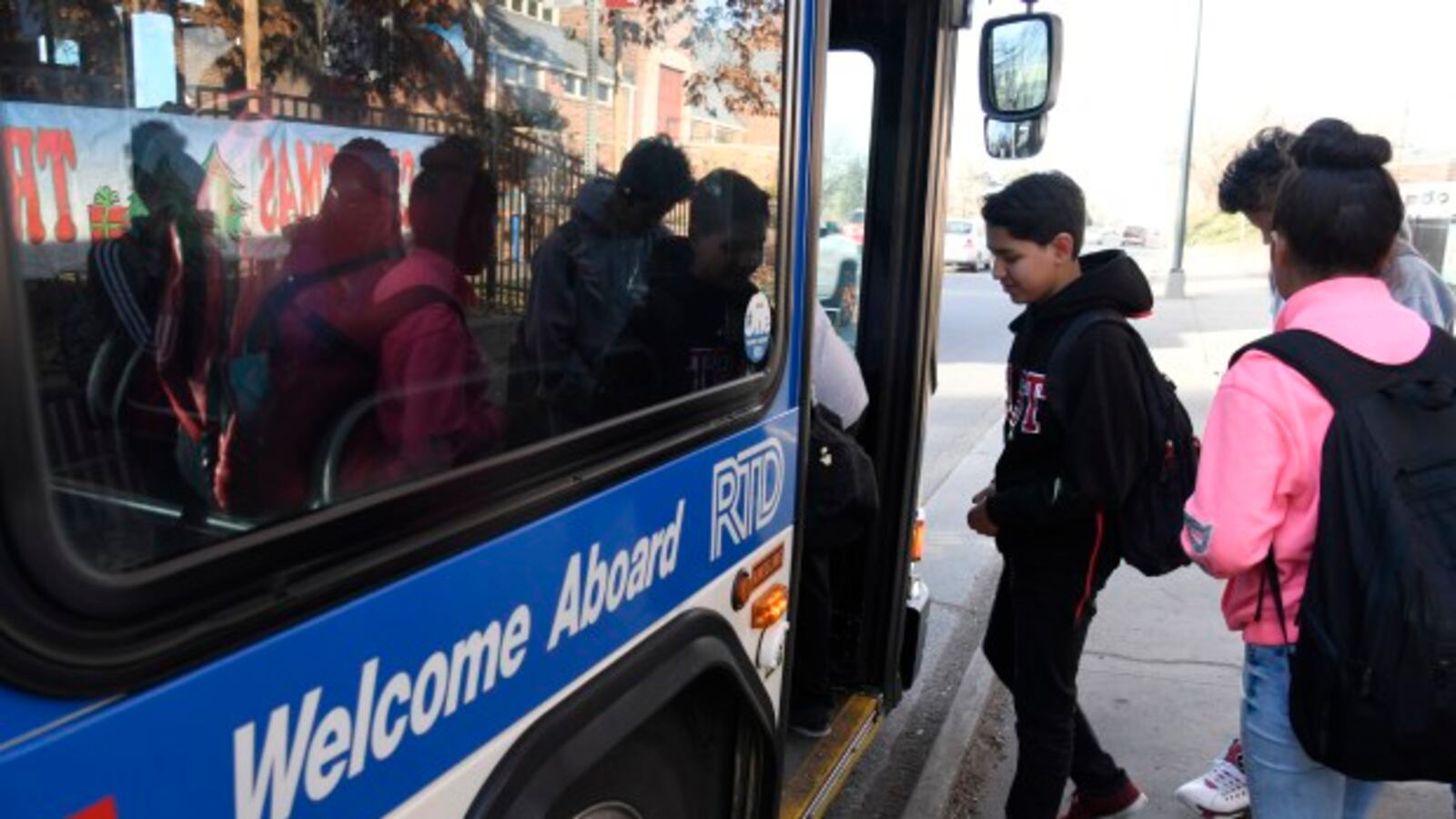More Denver high school students will qualify next month for passes to ride public buses to school, thanks to a lower youth fare being rolled out by the Regional Transportation District.
The money Denver Public Schools will save on RTD passes will allow the district to relax its eligibility criteria. Currently, students must live more than 3.5 miles from their high school to get a pass. As of January, students who live more than 2.5 miles from school will qualify.
The district estimates 1,700 additional high school students will get a free RTD pass. That will bring the total number of students who qualify to more than 4,400.
Denver Public Schools does not provide yellow bus service to most high school students, and there are reasons other than proximity that students might not qualify for an RTD pass.
With some exceptions, the district does not provide RTD passes to students who attend a school that is not their boundary school — that is, the school in their neighborhood to which they are assigned. Critics see that as a problem given that Denver Public Schools has a robust school choice process that encourages families to choose the school that’s right for them.
Matt Samelson of the Denver-based Donnell-Kay Foundation is among the advocates who have been pushing the district to expand transportation options for high school students. (Donnell-Kay is a financial supporter of Chalkbeat.) Samelson called the new 2.5-mile rule “a great first step.” Whereas Denver’s previous walk distance of 3.5 miles had been the highest in the state, the new rule brings the district in line with other metro-area school districts.
But Samelson said it “doesn’t chip away at the equity issue of who actually needs transportation.” To solve for that, district officials have laid out several next steps, including moving from a system where all eligible students get a bus pass to a system where students must opt in. That would free up more passes for other students in need.
“If there are students and families who would be eligible and aren’t going to use it, let’s give that pass to somebody who would use it,” Samelson said.
District officials said they hope to start the opt-in system next school year. If it succeeds, they envision piloting a further step: providing bus passes to students from low-income families who are using choice to go to a school outside their neighborhood.

